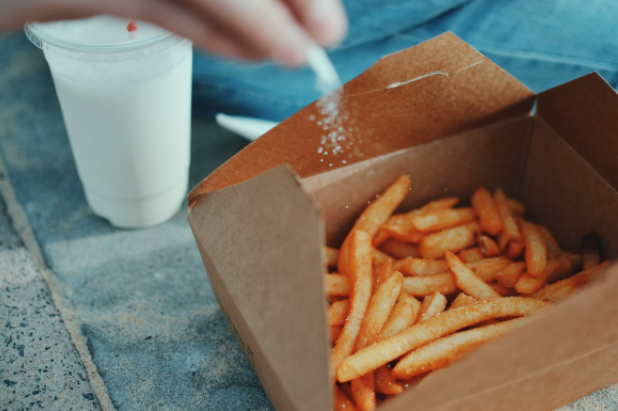Most Americans consume far too much salt.
This was spoken about in a recent CNN news report about how to orchestrate a low-sodium diet that isn’t pervaded by blandness.
According to the FDA, the average American consumes about 3,400 milligrams of it per day, while the recommended daily limit for sodium is actually 2,300 milligrams.
Excess salt in a person’s diet can increase their risk for a number of different diseases and conditions, including heart attack, stroke, kidney disease, and more.
To make things even more complicated, salt and sodium are not necessarily the same thing. Salt is a major source of sodium, but it’s not the only way to get it, either.
It’s also true that we need a certain amount of sodium in our diets to be healthy.
But how can you get the salt you need, while avoiding tipping the scales too far to the other side, and consuming too much of it?
Salt is, after all, delicious. It’s truly one of the most important spices for bringing out the flavor in your food.
But of course, even too much of a good thing can be a bad thing, right?
Well, in this post, you’re going to learn 4 tips for how to lower sodium intake in your diet.
Let’s dive into it.
1. Stop Adding Extra Salt
For the most part, many of the foods we eat in America are already laden with salt.
Therefore, we tend to get plenty of sodium, even if we don’t add any additional salt to our food.
2. Choose Packaged Foods Carefully
When you buy pre-packaged food, always compare labels and check the sodium content.
If the food is high in sodium, you may want to consider an alternative that doesn’t contain as much.
3. Watch Out For Condiments
Some condiments are actually packed with salt. Bottled salad dressing, ketchup, salsas, pickles, and olives are just a few examples of foods that sometimes contain alarmingly high levels of sodium.
For best results, make sure to check the labels and choose the healthiest option possible.
If you can’t find condiments that don’t have a ton of sodium, consider cooking with natural spices and herbs to help bring out the flavor.
You can even make your own condiments if you’re determined enough!
Where there’s a will, there’s a way.
4. Look For Canned Vegetables With The ‘No Salt Added’ Label
It’s surprisingly common for salt to be added to canned vegetables.
Therefore, looking for a ‘no salt added’ label can fast-track you to the process of buying veggies that don’t contain a bunch of extra sodium.
You can follow this same advice when buying other canned goods as well. Chicken broth is a great example.
In Conclusion
There you have it.
4 tips for lowering sodium in your diet, and some ideas for how you can make up the difference in other ways.
Maintaining a diet where you get the appropriate amount of sodium is important.
Now, all you have to do is get to work.
You’ve got this!
